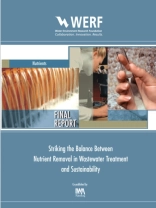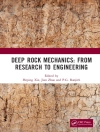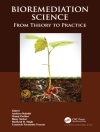This study focuses on sustainability impacts as wastewater treatment plants implement treatment technologies to meet increasingly stringent nutrient limits. The objective is to determine if a point of "diminishing returns" is reached where the sustainability impacts of increased levels of nutrient removal outweigh the benefits of better water quality. Five different hypothetical treatment trains at a nominal 10 mgd flow were developed to meet treatment targets that ranged from c BOD mode (Level 1) to four different nutrient removal targets. The nutrient removal targets ranged from 8 mg N/L; 1 mg P/L (Level 2) to the most stringent at <2 mg N/L; <0.02 mg P/L (Level 5). Given that sustainability is a broad term, the industry-accepted three pillars of sustainability were evaluated and discussed, and particular emphasis was placed on the environmental and economic pillars. The following variables received the most attention: greenhouse gas (GHG) emissions, a water quality surrogate that reflects potential algal growth, capital and operational costs, energy demand, and consumables such as chemicals, gas, diesel, etc. The results from the GHG emissions metric are shown below. Note that biogas cogeneration is represented by negative values as biogas production can be used to offset energy demands. The nitrous oxide (N2O) emissions values are based on the average biological nutrient removal (BNR) and non-BNR plants evaluated in the United States national survey by Ahn et al. (2010b). The error bars represent the data range of the national survey. The GHG emissions results suggest that a point of diminishing return is reached at Level 4 (3 mg N/L; 0.1 mg P/L). The GHG emissions show a steady increase from Levels 1 to 4, followed by a 65% increase when moving from Level 4 to 5. Despite a 70% increase in GHGs, the discharged nutrient load only decreases by 1% by going from Level 4 to 5. The primary contributors to GHG emissions are energy related (aeration, pumping, mixing). The GHG emissions associated with chemical use increases for the more stringent nutrient targets that required chemical treatment in addition to biological nutrient removal. In terms of cost, the total project capital cost increases approximately one-third from $9.3 million to $12.7 million for changing from Level 1 to 2, followed by a more than doubling in cost when changing from Level 1 to 5. Total project capital costs in this report are for a Greenfield plant. The operational cost increase between levels is more pronounced than total project capital cost with more than five-times increase from Level 1 to 5 ($250/MG treated to $1, 370/MG treated, respectively). This report focused on in-plant (point source) options for nutrient removal and the implications for cost and sustainability. Other approaches, such as addressing non-point sources, could be added to the assessment. Rather than focusing strictly on point source dischargers and requiring Level 4 or 5 treatments, Level 3 or 4 treatments complimented with best management practices of non-point sources might be a more sustainable approach at achieving comparable water quality.
J. B. Neethling
Striking the Balance between Nutrient Removal in Wastewater Treatment and Sustainability [PDF ebook]
Striking the Balance between Nutrient Removal in Wastewater Treatment and Sustainability [PDF ebook]
Cumpărați această carte electronică și primiți încă 1 GRATUIT!
Limba Engleză ● Format PDF ● ISBN 9781780403298 ● Editura IWA Publishing ● Publicat 2011 ● Descărcabil 6 ori ● Valută EUR ● ID 5760619 ● Protecție împotriva copiilor Adobe DRM
Necesită un cititor de ebook capabil de DRM












